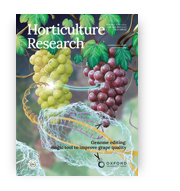
Research papers of the month – November 2022
We present the highest-score research papers of November 2022. These papers have ben published in journals with the highest Ministerial score – 200 points.
Piotr Plewiński; Sandra Rychel-Bielska; Bartosz Kozak; Iván J Maureira-Butler; Muhammad Iqbal; Matthew N. Nelson; Michał Książkiewicz
Horticulture Research
Ministerial score = 200.0
Journal Impact Factor (2022) = 7.291 (Q1)
 Ongoing climate change has considerably reduced the seasonal window for crop vernalization, concurrently expanding cultivation area into northern latitudes with long-day photoperiod. To address these changes, cool season legume breeders need to understand molecular control of vernalization and photoperiod. A key floral transition gene integrating signals from these pathways is the Flowering locus T (FT). Here, a recently domesticated grain legume, yellow lupin (Lupinus luteus L.), was explored for potential involvement of FT homologues in abolition of vernalization and photoperiod requirements. Two FTa (LlutFTa1a and LlutFTa1b) and FTc (LlutFTc1 and LlutFTc2) homologues were identified and sequenced for two contrasting parents of a reference recombinant inbred line (RIL) population, an early-flowering cultivar Wodjil and a late-flowering wild-type P28213. Large deletions were detected in the 5′ promoter regions of three FT homologues. Quantitative trait loci were identified for flowering time and vernalization response in the RIL population and in a diverse panel of wild and domesticated accessions. A 2227 bp deletion found in the LlutFTc1 promoter was linked with early phenology and vernalization independence, whereas LlutFTa1a and LlutFTc2 indels with photoperiod responsiveness. Comparative mapping highlighted convergence of FTc1 indel evolution in two Old World lupin species, addressing both artificial selection during domestication and natural adaptation to short season environmental conditions. We concluded that rapid flowering in yellow lupin is associated with the de-repression of the LlutFTc1 homologue from the juvenile phase, putatively due to the elimination of all binding sites in the promoter region for the AGAMOUS-like 15 transcription factor.
Ongoing climate change has considerably reduced the seasonal window for crop vernalization, concurrently expanding cultivation area into northern latitudes with long-day photoperiod. To address these changes, cool season legume breeders need to understand molecular control of vernalization and photoperiod. A key floral transition gene integrating signals from these pathways is the Flowering locus T (FT). Here, a recently domesticated grain legume, yellow lupin (Lupinus luteus L.), was explored for potential involvement of FT homologues in abolition of vernalization and photoperiod requirements. Two FTa (LlutFTa1a and LlutFTa1b) and FTc (LlutFTc1 and LlutFTc2) homologues were identified and sequenced for two contrasting parents of a reference recombinant inbred line (RIL) population, an early-flowering cultivar Wodjil and a late-flowering wild-type P28213. Large deletions were detected in the 5′ promoter regions of three FT homologues. Quantitative trait loci were identified for flowering time and vernalization response in the RIL population and in a diverse panel of wild and domesticated accessions. A 2227 bp deletion found in the LlutFTc1 promoter was linked with early phenology and vernalization independence, whereas LlutFTa1a and LlutFTc2 indels with photoperiod responsiveness. Comparative mapping highlighted convergence of FTc1 indel evolution in two Old World lupin species, addressing both artificial selection during domestication and natural adaptation to short season environmental conditions. We concluded that rapid flowering in yellow lupin is associated with the de-repression of the LlutFTc1 homologue from the juvenile phase, putatively due to the elimination of all binding sites in the promoter region for the AGAMOUS-like 15 transcription factor.
DOI:10.1093/hr/uhac180










